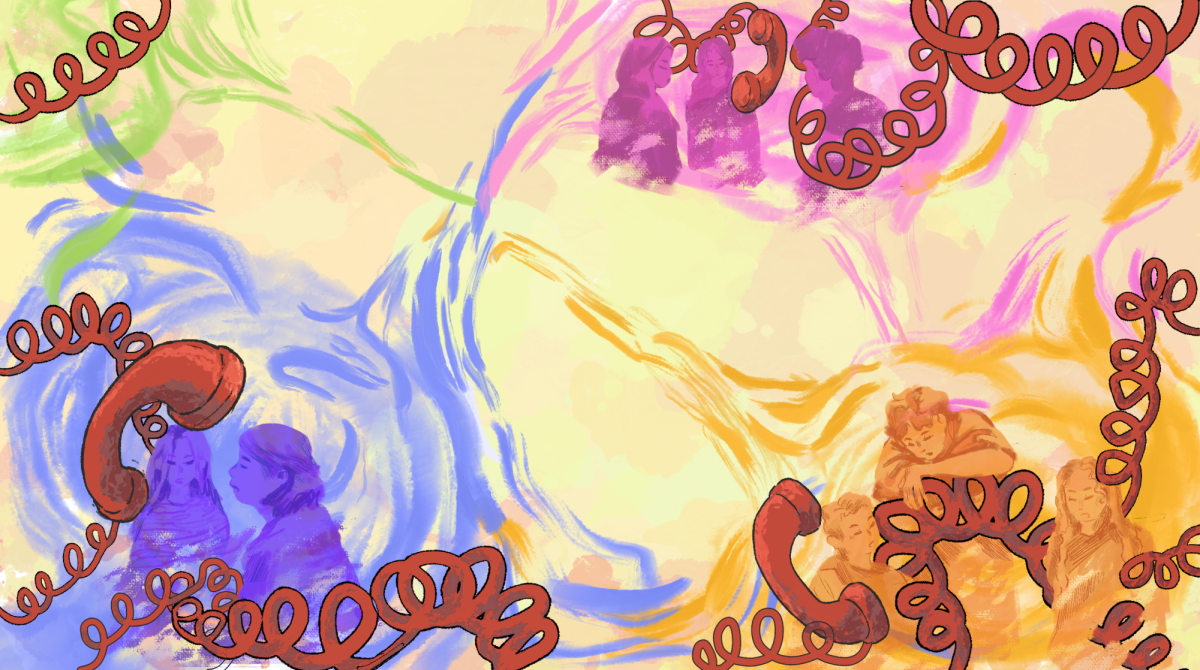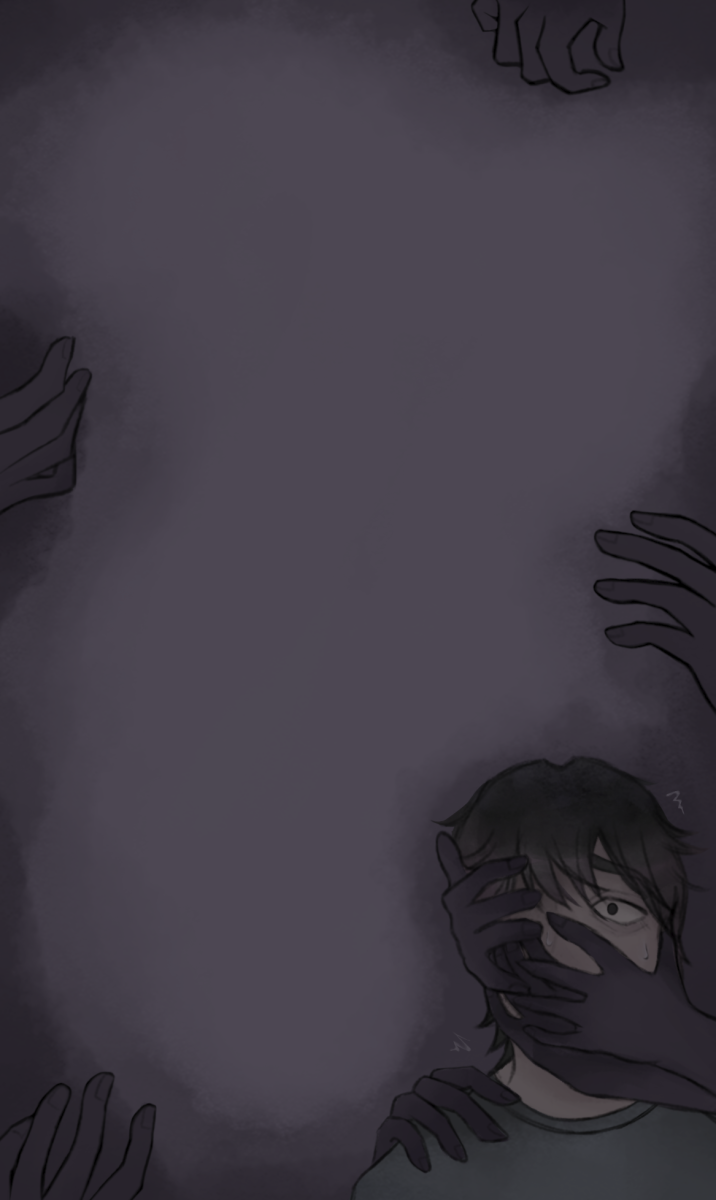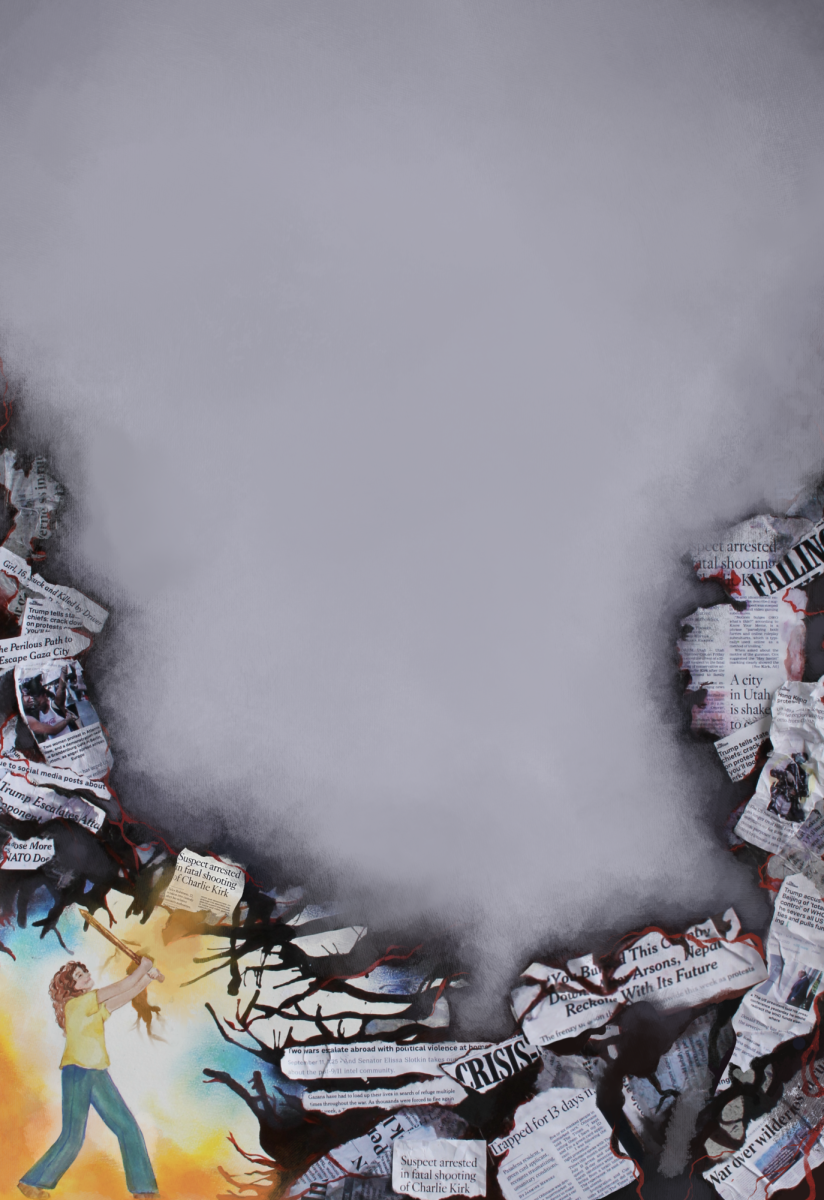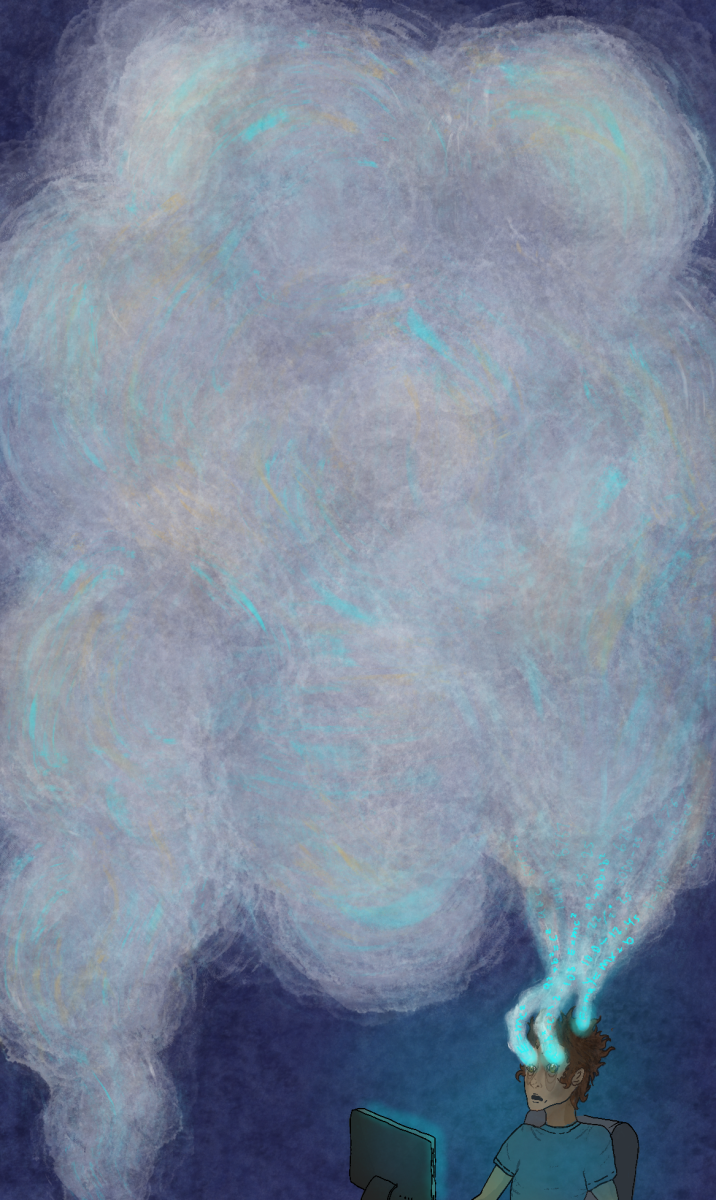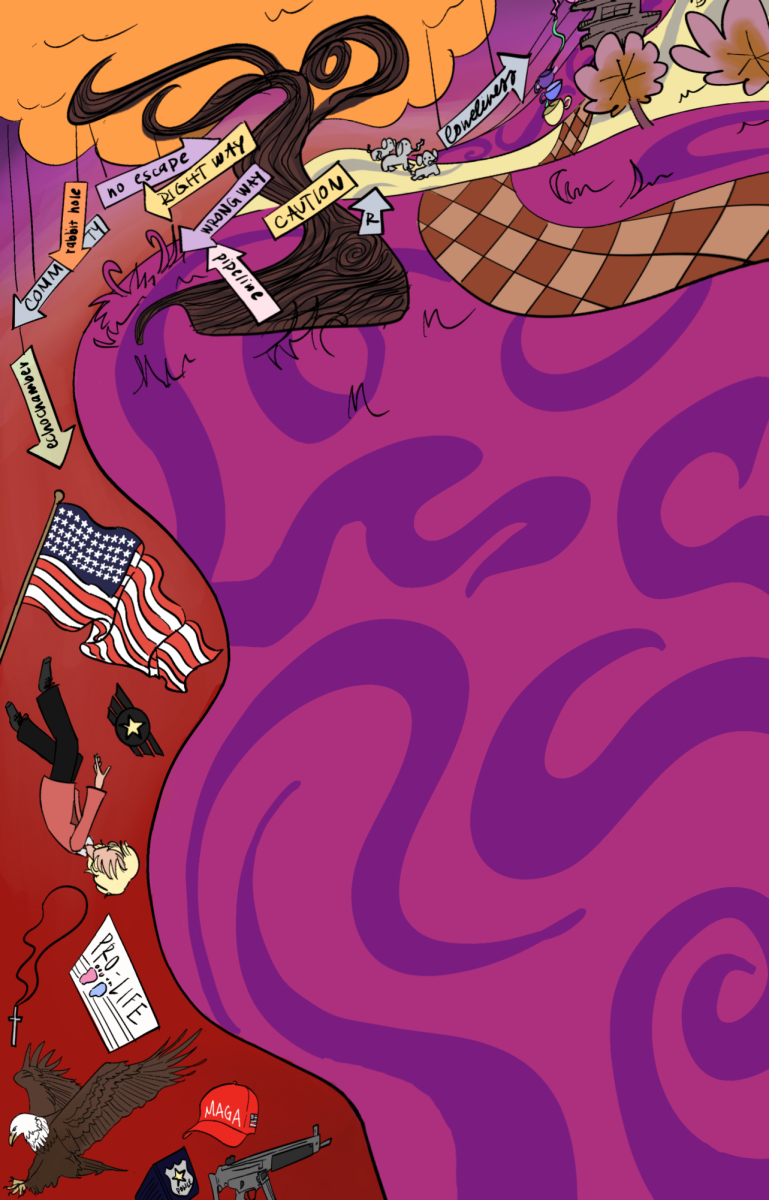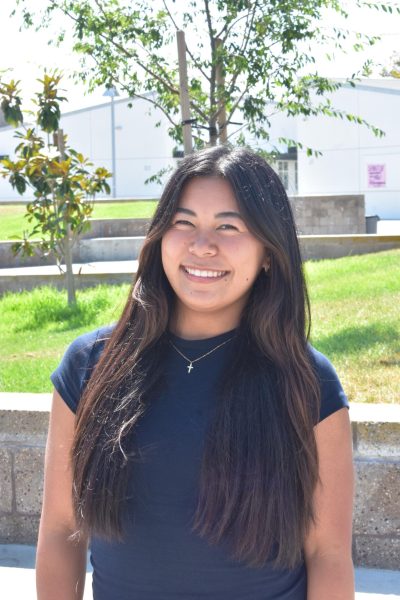Eva Porter (12) is a member of Westview Dance Troupe. She rehearses with the team nearly nine hours per week. After each good run-through, the team congratulates each other with a resounding “werk.”
“On Dance Troupe, when people finish performing, we’ll encourage them and say ‘werk,’ ‘you ate that up,’ or ‘that was heat,’” Porter said. “In a way, we use these words of encouragement to include everyone in the dance team. I think it builds inclusivity and is an easy way to connect with one another.”
Porter said that she and her friends talk in a similar way, laugh at similar things, and make similar references to online trends, mostly from TikTok. She said she feels that it’s easier to connect with the broader group of teenage girls at Westview because of their shared understanding of slang terms like “slay.”
“[When] I make a reference to something and someone understands it, it usually resolves in a laugh and a beginning bond that can start a friendship,” Porter said. “Almost every time I talk to a teenage girl I know or don’t know, we bond over using the word ‘slay.’ By using ‘slay,’ we can both tell that we have common ground as being teenage girls. Guys don’t typically understand what it means and I have to explain it to them. ”
It’s fairly common for groups of people, like Porter’s friends, to share the same speech style, according to UC San Diego Associate Teaching Professor of Linguistics and Director of the Computational Social Science Program Will Styler. Lects, distinct varieties of speech or language — similar to dialects — are shared by social and regional communities. Styler said that lect varieties exist as a result of language constantly changing and are part of how people identify one another, recognizing their regional background, ethnicity, or common interests.
“Southern California folks have certain aspects to the way they speak that make them identifiable versus somebody from Northern California versus somebody from the upper Midwest,” Styler said. “This could [also] be something that is more social. High school students have a different social dialect than grandparents in San Diego. There are [also] racial groups. It’s often the case that there are Black folks who speak a little bit differently than White folks in the same area. All of these give different language varieties.”
Porter’s group of friends in her Dance Troupe share a lect, which she said is part of what makes her feel comfortable around them. By merely talking with one another, they share common experiences and subconsciously create similar minor changes to their choice of language, according to Styler. This is why the people Porter spends the most time with talk more similarly to her than strangers.
Styler said that a key insight of sociolinguistics is that one chooses to use a certain dialect depending on who they’re speaking to and their purpose.
“When I choose to talk in a certain way with one of my students or with my wife or with anybody else, I’m doing that on purpose,” Styler said. “When you [use] a certain set of features, you’re showing them, ‘Hey, you’re a part of my community and I’m a part of yours.’ People choose to use each of their different dialects. This is both strategic and can also just be, ‘I think this person is a part of my group, so I’m going to talk in the way that my group talks and if they reply in kind, I know we have things in common.’”
Porter said that the inside jokes and understanding of the same phrases set her dance friends apart from the other people she interacts with at school and at work.
“These are not terms I would say at work because I’m working with a doctor and really young kids who wouldn’t understand what I mean,” Porter said. “It would be odd and inappropriate if I used those words in a professional doctor’s office because the doctor isn’t one of my dancer friends.”
Porter said most of the terms that she uses are from social media, and that, since her friends participate on the same platforms, they are aware of the diversity of commonly used slang.
Styler said he admires the way social media has allowed small communities to exist over long distances, which wasn’t possible only about 40 years ago.
“I love it because the world is smaller in some ways,” Styler said. “When I was growing up, it would have been very hard for me to get somebody from Norway on a phone call, let alone to know that somebody from Norway was also interested in the same game that I play. But now I could join an [online chat room] for my favorite video game and suddenly I’m connected to people who also like [my favorite game] from across the world. In some ways that makes it possible for these communities based on shared interest to include people from all around the world. That’s really cool.”
A growing population of social media users have adopted the same terms such as the trending “demure and mindful” phrase, thus standardizing their lect. According to Forbes Magazine, over 300,000 videos have been posted with the #demure hashtag.
Though the unification of language can result in connection, Dan Brooks, a freelance writer for The Atlantic, The New York Times magazine, and various other websites said that these widely popular trends of slang pose a danger to the diversity of language.
“Something that people seem to pay a little less attention to is social media as a standardizing force,” Brooks said by phone. “I think that any mass medium is to some degree standardizing. When television was invented, that was also a standardizing force on how people talk, behave, and dress, and to a lesser extent, their ideology. Social media has an even more standardizing force to a greater degree.”
In Brooks’ article, “Social Media Broke Slang. Now We All Speak Phone.” in The Atlantic magazine, he said that exformation — the information conveyed through language that isn’t explicitly said — is increasingly less available as language trends take over the internet. As lect is more standardized, social media has also endangered people’s ability to identify their group through language.
In Porter’s case, if her coworkers and classmates all began to use the same phrases “werk” and “you ate that up,” she wouldn’t have those phrases as identifiers for her Dance Troupe.
“[Through] exformation, I am conveying a whole parcel of unspoken ideas about our relationship, our shared cultural consumption, and my perspective on it,” Brooks wrote in his article.
Due to online chat rooms and social media trends, language features and similarities are shared transcontinentally, according to Styler. Beyond Porter and her friends’ shared lect, she shares similar phrases, references, and speaking styles with thousands of other Gen Z teens and adults around the world.
“It definitely helps with connecting [with Gen Z] and it also shows the generational differences,” Porter said. “When I talk to my mom with [slang] words, she’s like, ‘I don’t know what that is. What do you mean?’ Technology has just really affected everything about the younger generations.”
Algorithmic bubbles personalize the content that users are exposed to. Through the filter, Porter is exposed to content she finds funny, while Porter’s mom’s social media feed presents an entirely different subset of content.
Though algorithmic bubbles may unite people of similar interests, they also define the differences between groups and filter the content that users consume, according to BBC UK news.
Porter said she feels more free to speak with slang online than at school where she often feels criticized for using slang.
“I feel like sometimes I’ll use words like ‘slay’ or ‘werk’ and people think it’s weird because they don’t know what it means,” Porter said. “I feel like they judge and think it’s weird.”
Despite algorithmic bubbles, social media algorithms also have the potential to standardize content by feeding users similar trending posts. Consequently, people who would have been divided by their different ages, environments, and groups are exposed to each other’s slang online, according to Brooks.
“On social media, there is no such exclusion,” Brooks wrote in his article. “Thirty-five-year-olds hear the slang of teenagers, college students are privy to the language of the urban underclass, and advertising consultants learn how to talk like self-diagnosed anxiety shut-ins. As a result, how someone talks is no longer a reliable indicator of where they’re coming from.”
Nonetheless, Styler said that algorithmic bubbles and online communities can reduce stigma around how people should talk: typically a formal, slang-absent form.
“Any of the social media streams that allow video content are lovely because there isn’t really somebody saying you have to talk in a certain way to be on YouTube aside from a few advertiser guidelines,” Styler said. “For a long time, if you were going to be on the evening news, you needed to talk in a certain way, so it’s very possible for people in a community that is underrepresented to not be able to have a presence in the mainstream media and still have a strong presence among like-minded people online. They can influence other people and then say, ‘Hey all of the people who are in this community, I talk in this way and if you’re in this community, you can talk this way too. You can be famous and talk like I do, you can be powerful and talk like I did.’ They’re not saying that directly, but that’s part of the messaging and it in some ways destigmatized [expectations on speaking style].”
Even with niche algorithmic bubbles, some social media trends grow so popular that they appear on the content feeds of various demographics, growing large enough to be common knowledge. The phrase “demure and mindful” became widespread over the course of only a few weeks, and according to The Desert Sun, like other internet-popular phrases such as “aesthetic” and “brat,” they were integrated into Gen Z lect.
Amidst the excitement and fun of a new trend, the origins of slang are often lost along the way. A large portion of popular slang on social media originates from the African American and LGBTQ+ communities, according to Styler. Porter said that while she learned terms like “salty,” “woke,” “it’s giving,” and “slay” from social media, she was always unaware that they had those roots.
“I didn’t know that they came from [those] origins,” Porter said. “I think other people definitely don’t know that. But I do feel that it’s an unfortunate side effect that the culture and history behind the words is kind of lost and overlooked.”
Through becoming mainstream, slang words shift in semantic meaning, according to Styles. He said that slang, like all words, forms different meanings in different communities. He noticed firsthand the change in meaning of the term “slay,” and how differently it’s used today since Beyoncé took “slay” mainstream in 2016, as he was partly raised by family in the drag community, where the term originated.
“We get a lot of these words from oftentimes populations who are disenfranchised, who are underserved,” Styler said. “This hot new word, ‘slay’ has been a word in the drag scene for over 20 years but now suddenly it’s caught mainstream and it’s a little bit more semantically bleached. The original context of the meaning is lost, and so it means something a bit different, but it is now out in the wild and still retains some part of it. I think this is always the case.”
Styler said that language is always changing. He referenced the quote, “A grammarian trying to stop language change is like a gardener trying to stop continental drift.”
“[Language change] is a natural process, it’s a constant process,” Styler said. “There’s really no way to stop it one way or the other. Even if we decided as a society that we must preserve the original meaning of ‘tea’ as in ‘spill the tea,’ we couldn’t do it.”
According to Styler, the language people use or don’t use, the slang they choose or don’t, are meant to change. He said that attempts at slowing or stopping the changes of lect may be used as tools for oppression.
“Very often people attack the way that somebody talks because they don’t have the bravery to attack the people themselves,” Styler said. “When we hear discourse about language use in social media and ‘Oh my God, the kids are misusing the word ‘demure,”’ look at who they’re attacking. So often it’s young people, so often it’s young women. Any time that these discussions about social media and languages come up, always ask yourself, ‘Who’s complaining and why?’ Very often you’re going to find the same systems of systematic oppression, the same systems of disenfranchisement, the same things that have always been a problem, just showing up in a slightly different way. I tend to push back against the idea that language should be [a certain way] because language should be exactly as people need it to be.”


